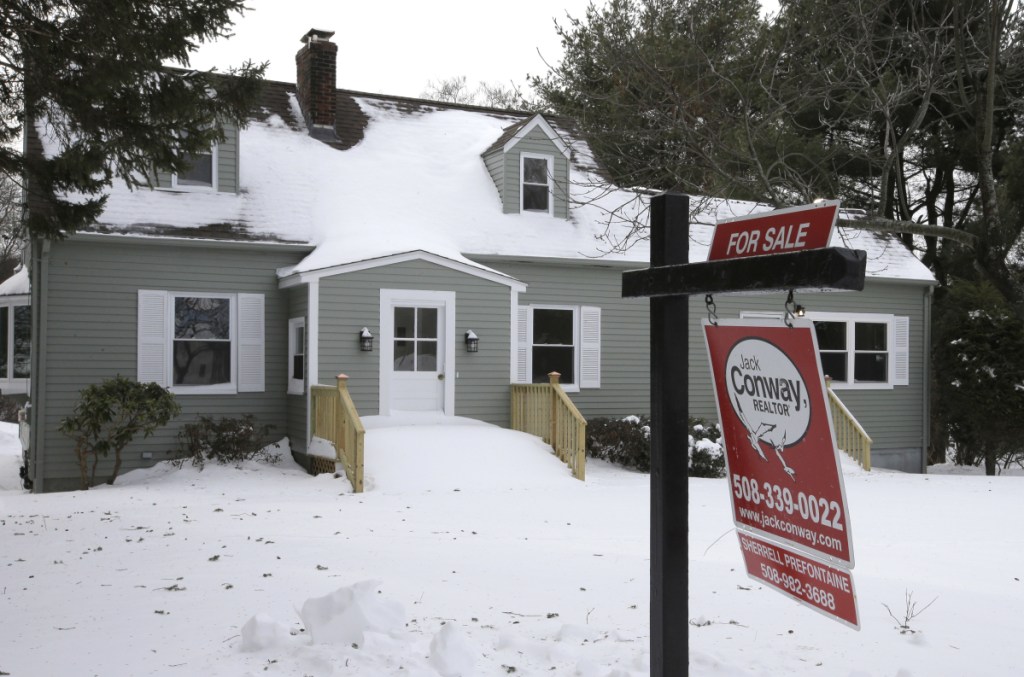Mortgage rates continued their ascent this week, their fifth consecutive increase.
According to the latest data released Thursday by Freddie Mac, the 30-year fixed-rate average shot up to 4.32 percent with an average 0.6 point. (Points are fees paid to a lender equal to 1 percent of the loan amount.) It was 4.22 percent a week ago and 4.17 percent a year ago. The 30-year fixed rate has risen about 40 basis points (a basis point is 0.01 percentage point) since the start of the year and hasn’t been this high since December 2016.
The 15-year fixed-rate average jumped to 3.77 percent with an average 0.5 point. It was 3.68 percent a week ago and 3.39 percent a year ago. The five-year adjustable rate average rose to 3.57 percent with an average 0.4 point. It was 3.53 percent a week ago and 3.21 percent a year ago.
“Mortgage rates moved sharply higher last week, spurred by a sell-off in the stock market and further evidence of a strong economy that will soon force the world’s major central banks to push interest rates higher,” Aaron Terrazas, senior economist at Zillow, said in a statement. “This week political uncertainty should wane as Congressional negotiators have agreed to a two-year budget, but financial market volatility could continue. Short-term market fluctuations aside, the trend in rates is clearly upward after spending years near historic lows.”
Mortgage rates tend to follow the same path as long-term bond yields, which have been steadily climbing. The yield on the 10-year Treasury has climbed about 40 basis points since the start of the year on fears of escalating inflation and concerns about Federal Reserve rate hikes.
Bankrate.com, which puts out a weekly mortgage rate trend index, found that most of the experts it surveyed say rates will continue to move higher in the coming week. Michael Becker, branch manager of Sierra Pacific Mortgage, is one who predicts rates will go up.
“The sell-off in equity markets provided a quick dip in mortgages rates,” Becker said. “But with the sell-off behind us, it looks like markets are once again focusing on the stimulative aspects of the tax cuts and the potential for inflation to rise. This will help push up mortgage rates in the coming week.”
Meanwhile, mortgage applications were flat last week, according to the latest data from the Mortgage Bankers Association. The market composite index – a measure of total loan application volume – ticked up 0.7 percent from a week earlier. The refinance index rose 1 percent, while the purchase index was unchanged from a week ago.
The refinance share of mortgage activity accounted for 46.4 percent of all applications, falling to its lowest level since July.
“Even with the rate increase, there was little change in refinance application volume for the week,” said Mike Fratantoni, MBA chief economist. “However, there has been little change in refinance application volume over the last month or frankly over the last year. We seem to be at or close to a floor with respect to refinances.”
“February is really the kickoff for the spring buying season each year,” he said. “This week, we saw a 7 percent increase in purchase applications. However, that just represents typical seasonal growth at this time of year, so on an adjusted basis, purchase volume was flat. On a [year-over-year] basis, purchase volume was up 8 percent, consistent with the strong reading we received on the job market on Friday.”
The MBA also released its mortgage credit availability index (MCAI) this week that showed credit availability increased in January. The MCAI rose 2.1 percent to 182.9 last month. A decline in the MCAI indicates that lending standards are tightening, while an increase signals they are loosening.
“Credit availability increased across the board in January, more than reversing December declines in almost all component indices,” Lynn Fisher, MBA’s vice president of research and economics, said in a statement. “Jumbo credit programs rebounded most strongly and reached a new series high, driven by an increase in the number of programs with reduced documentation requirements. In government lending programs, credit availability remains somewhat lower than the rest of 2017.”
Copy the Story LinkSend questions/comments to the editors.



Success. Please wait for the page to reload. If the page does not reload within 5 seconds, please refresh the page.
Enter your email and password to access comments.
Hi, to comment on stories you must . This profile is in addition to your subscription and website login.
Already have a commenting profile? .
Invalid username/password.
Please check your email to confirm and complete your registration.
Only subscribers are eligible to post comments. Please subscribe or login first for digital access. Here’s why.
Use the form below to reset your password. When you've submitted your account email, we will send an email with a reset code.